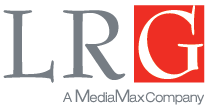Trade shows are one of the most important aspects of generating new business for the physical security industry, yet many companies lack the proper approach to these shows and end up wasting precious time and resources. By utilizing the inbound methodology, companies can maximize their ROI from trade shows and set themselves up for a successful year. Inbound isn’t necessarily hard, but it does take strategic planning and an appropriate lead time.
Identify the call-to-action
Before determining how to approach a trade show, it is imperative to set goals that are both achievable and trackable. Are you looking for new leads? An increase in your social media following? More traffic to your website? By determining an end goal, you can create a campaign around a specific call-to-action that will help you meet company objectives. Your CTA will help you define success, so all materials should tie back to it, including the physical trade show booth, social campaigns and emails.
Create a dedicated landing page
The best way to capture information from interested attendees is through a dedicated landing page containing an offer specific to your trade show objective. This information not only helps determine who your offer is attracting but also how well it is converting. If you have a significant number of clicks to the page but minimal conversions, you can play around with the page to make it more appealing to visitors. Make sure that the form asks for information specific to both your marketing and sales goals, as you can use these qualifiers when following up both when you meet the attendee at the show and after the show has ended.
Use social media to draw attention to your landing page
We live in a digital world, where social media has become the center of communication. Use this to your advantage with both organic and paid social campaigns targeting your intended demographic. Use trade show and company hashtags, attractive imagery and content relating to the trade show to draw people to your landing page. Be sure to track traffic, clicks and conversions so you can see which ad sets and platforms are performing the best. Start your social efforts early so that you can alter the ads or messaging to garner the most attention. You can also use social to launch product teasers specific to what you’re introducing at the show.
Design your booth and handouts around your central message
Having an attractive booth is important when trying to stand out amongst a room of similar products and services. Make sure your messaging is clear and aligns with your campaign objectives as to not confuse attendees. Invest in conversation starters, such as custom booth structures, unique takeaways or eye-catching signs; even though it may cost a bit more, it will help draw more traffic to your booth. Have a tablet handy to capture information from attendees who may not have accessed your landing page prior to the show.
Follow up with new contacts
You’ve collected all this data – now what? Based on the information collected on the landing page, you should be able to segment your contacts by industry, job description, where they are in the Buyer’s Journey, etc. With this information, you can create specific workflows that send different content to different segments that will help move them through the Buyer’s Journey. It’s important to segment your contacts because you don’t want to send Decision stage information to someone who is still in the Awareness stage of the buying process.
By incorporating inbound marketing into your trade show campaign, you will be able to learn who your potential customers are, where they are in the Buyer’s Journey and how to best convert them into actual customers. Inbound allows for specific segmentation of your contact list so you can send content that directly correlates with where they are in the decision process. Metrics are huge when it comes to determining the success of the campaign, and they will also help convince management to apply this practice to all trade shows.
Not sure where to begin when it comes to the inbound approach? Read our guide here or contact us for a free consultation on trade show marketing.




